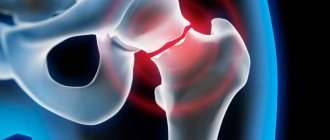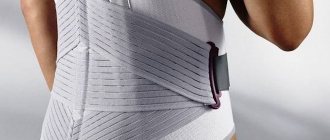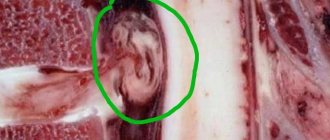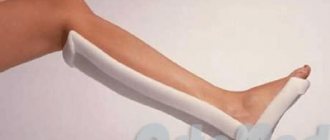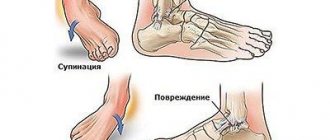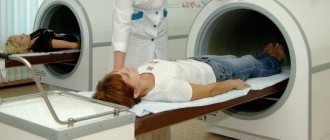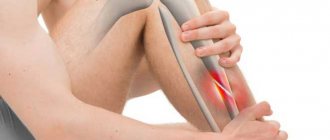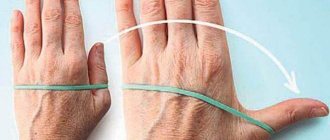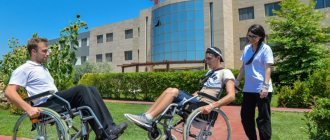The heel bone in the foot is the largest and strongest. Its purpose is to help the foot bear the load that occurs when walking and running, playing sports and jumping. Sometimes after sudden, poorly calculated movements, injuries, falls from heights, accidents, damage is caused to the bones.
After treatment and restoration measures have been carried out and certain deadlines have been met, you will need to begin developing the damaged area. A patient who has suffered a calcaneal fracture is selected for a rehabilitation complex, the purpose of which is to ensure a final recovery. Correctly selected treatment will ensure the absence of post-traumatic complications, the patient will be able to safely step on each leg after completion of rehabilitation.
Restoring the previous capabilities of the limb
Rehabilitation after a heel fracture is, first of all, careful treatment of the damaged area, especially in the first days after the plaster is removed. During this period, pain can still be quite strong, so the increase in load is carried out gradually, and do not forget about the timely implementation of procedures in the required quality.
Incorrectly chosen recovery measures can lead to serious complications:
- Incorrectly fused bone;
- The appearance of flat feet of a post-traumatic nature;
- The feet are often deformed;
- Development of joint diseases of a destructive, dystrophic nature;
- Formation of growths on bones;
- The foot may lose its ability to function fully.
Incorrectly fused bone
Flat feet of post-traumatic nature
Feet become deformed
Formation of growths on bones
If a displaced heel fracture occurs as a result of an injury, rehabilitation can be carried out according to a special schedule. In this case, loads can be allowed no earlier than at least three months have passed after the injury.
Probability of complications after osteosynthesis
Surgery leads to injury to soft tissues and skin, so complications are possible. The following complications may develop after surgery:
- The wound is healing slowly. This is common in calcaneal fractures because the skin and muscles in the foot have a poor blood supply. Such complications occur more often in smokers and people with diabetes.
- Wound infection. Possibly due to the structural features of the muscle tissue of the foot. Often the reason is slow healing of the wound.
- During surgery, damage to the sural nerve may occur. Sometimes this occurs as a result of pressure placed on it by the scar tissue that forms. Symptom of damage: the sensitivity of the leg is impaired and pain occurs at the site where it passes.
- Arthrosis of the subtalar joint often develops and stiff mobility of the foot is noticed. This complication occurs due to injury.
- Sometimes patients experience pain or discomfort where the plate or pins are placed. In this case, after the bones have fused, they can be removed.
These were the main complications that can arise during recovery from heel surgery. With the supervision of the attending physician and timely initiation of treatment, the risk of their development is minimal.
How is rehabilitation carried out for patients who have broken their heel?
Restorative measures are usually carried out as a complex. They can be like this:
- Exercise therapy after a bone fracture is aimed at restoring the injured leg’s ability to move freely;
- Massage to eliminate manifestations of muscle atrophy;
- Physiotherapy - helps improve hemodynamics by normalizing blood flow.
After the immobilization bandage is removed, the following additional procedures are performed:
- Compresses with added alcohol for warming;
- Local baths with warm water, herbal infusions and sea salts;
- Rubbing with ointments with a warming effect;
- Wearing special orthopedic shoes.
Rehabilitation after a calcaneal fracture can be carried out at home, but all activities must be carried out after the approval of a doctor. After all conditions are met, the patient is likely to return to his previous standard of living.
In this case, it is important for the patient to show diligence and patience, since recovery can take a lot of time and effort.
Rules for recovery at home
If an osteosynthesis operation has taken place (surgical restoration of the heel bone with the formation of multiple fragments), then the patient is prescribed strict bed rest . During the recovery period at home, it is necessary to eliminate the load on the injured leg. Crutches are used to move around.
Photo 2. A heel fracture requires prolonged bed rest. Source: Flickr (jess)
Purpose of restorative procedures
The time it takes to recover from a heel bone fracture depends on how severe the injury was. If there was a fracture without displacement, aggravating conditions, recovery will take several weeks. After serious fractures, multiple, with the formation of fragments, rehabilitation will last from several months to several weeks.
Injuries of this type can vary significantly in severity. But there are general directions for recovery after a calcaneal fracture. The recovery period is necessary for the following purposes:
- Improve healing of the affected area;
- Reduce swelling after the cast has been removed;
- Normalize nutrition of affected tissues;
- Prevent inflammation in the affected limb;
- Influence the atrophy of muscle tissue as a preventive action;
- Prevent the occurrence of pain and the development of various types of complications.
Reduce swelling
Improve healing
Prevent inflammation
Affect tissue atrophy
Once the heel bone is broken, the final recovery depends on how much time has passed from that point. The period before the fracture completely heals is divided into three recovery stages: immobilization, post-immobilization and late.
Preparation and carrying out the procedure
Before taking a salt bath, wash the injured limb first with soapy water and then with clean water. The procedure is recommended to be carried out 2 hours after meals, before daytime or nighttime sleep.
How to properly take warm baths after a fracture:
- Pour table salt, preferably sea salt, in the amount of 1 tbsp into a container for filling with warm and hot water (up to 40 ° C). L. For 1 l. IN.
- Soak the limb in a container with the solution for 10-20 minutes.
- Dry the skin with a towel and leave the limb for 60 minutes.
Note! It should be remembered that the frequency of the procedure, the duration of recovery therapy, the exact concentration of salt in the solution and the time of bathing should be agreed in advance with the doctor.
Various methods of water treatment - baths, baths, inhalations, bathing, irrigation and rinsing - have one common name - balneotherapy. Balneotherapeutic methods of treating many diseases have found their application.
in different countries of the world and are considered one of the main methods of spa treatment.
Therapeutic exercises to improve the condition
For various fractures, a lot for successful treatment depends on correctly selected exercises. Therapeutic exercise for a fracture of the calcaneus is selected depending on the severity of the injury.
The exercise therapy technique begins a few weeks after the injury. Before you begin the exercises, it is necessary to confirm the fusion of the bone to a certain level using x-rays. The duration of rehabilitation ranges from several weeks to months - this indicator is influenced by various factors.
Benefits of exercise:
- Strengthening muscle tone.
- Ensuring good blood circulation.
- The elasticity of ligaments and tendons increases.
- Recovery is approaching.
To select a set of exercises, you need to consult with experienced specialists - they will help you choose exercises, the effect of which will help develop your leg after a heel fracture, restore the normal functioning of the joints of the leg and the limb itself.
The doctor makes the selection on an individual basis, based on the results of the diagnostic measures performed and determining the type of fracture and its severity. You should pay special attention to performing gymnastics if the fracture has been displaced. In this case, the fusion period is longer, the muscles will be immobilized longer and will have to be restored more carefully.
In order to develop a leg after a heel fracture, the following exercises may be recommended:
- Flexion-extension of the injured limb;
- Leg rotations;
- Providing a carefully calculated, moderate load on the foot;
- Walking faster;
- Slow running.
Exercises after a heel fracture may be recommended to be performed at home daily. Sessions are carried out several times if discomfort does not occur. At first, the intensity of physical effort should not be great. Gradually, when the leg gets used to the loads, they are increased slightly. The use of exercises is expected to last for about two weeks. To avoid complications in the future, the course can be extended.
Rehabilitation techniques
If a person breaks the heel bone, the following procedures are the fundamental methods for restoring the leg:
- massage;
- therapeutic exercises (therapeutic gymnastics);
- physiotherapy;
- salt baths;
- balanced diet.
After the start of recovery procedures, the injured limb will still hurt for some time, so it should not be overexerted during exercise, much less stepped on it. If after a long time the patient notices that pain remains in the limb, it is worth repeating the examination and, if necessary, changing the set of exercises.
Physiotherapy
Patients who begin a rehabilitation course first of all encounter physical therapy. Such procedures may have several varieties:
- Phonophoresis;
- Electrophoresis;
- Magnetotherapy;
- Laser therapy;
- Warming up.
All these procedures are based on a certain impact on the site of injury with the help of special impulses that improve blood circulation and accelerate bone fusion. Also, with the help of physiotherapy, muscle tissue and nerve cells are stimulated, which allows you to maintain limb tone. With the help of physiotherapy, inflammatory processes are relieved and salt deposits are eliminated, and pain is reduced.
Massage
Massage procedures are prescribed during treatment and in the post-traumatic period. During therapy, massage is allowed to be performed on areas of the body that are not covered by plaster. To effectively influence the muscles and blood vessels, it is recommended to massage the metatarsal bones.
Massage using cedar oil has proven itself well. During the procedure, perform the following actions:
- Kneading;
- Tingling;
- Stroking;
- Rubbing.
Massage helps stimulate blood flow to the site of injury and activate the functionality of muscle tissue.
Therapeutic baths
Salt baths have a very good effect on the recovery process after fractures and injuries. The ingredients of such baths are one hundred grams of sea salt per liter of warm water. Such procedures very well expand the pores through which salt enters the body, stimulating blood circulation and replenishing the injured bone with the necessary nutrients.
Baths with decoctions of chamomile, thyme, rose hips and sage are also recommended. They are not only very effective, but also pleasant to use. Therapeutic baths not only have a good effect on the fusion of injured bones, but also have a good effect on cartilage tissue, which makes it possible to quickly develop joints after prolonged immobilization.
Physical therapy exercises
In order to properly develop the elasticity of muscle tissue after long-term immobilization, as well as to prevent stagnant processes, you should start doing physical exercises as soon as possible. Physical therapy should be carried out strictly according to all recommendations of the attending physician, with a gradual increase in physical activity. If you do the exercises incorrectly, you may not achieve the desired result and worsen the situation, so it is better to carry out exercise therapy in special medical institutions under the supervision of specialists.
What exercises can you do in a cast and immediately after it is removed?
If a patient is recovering from a heel fracture, they are interested in how they can help their foot recover. When the plaster has already been removed, what is allowed to be done next - should you step on the limb or save it, how to redevelop the leg? The decision to prescribe exercise must be made by the doctor.
During the first week after the fracture, there is no need to perform any movements with the injured limb. If you try to do this, you will not only provoke the appearance of painful sensations, but you can also displace bone fragments, touching them with the Achilles tendon. After two weeks have passed, gradually begin to move your fingers. This will help maintain better motor activity of the metatarsal joints.
When a month has passed, you can carefully step on the injured foot. In this case, the leg must be plastered or fixed with a splint.
It's time to start walking on crutches to gradually restore motor activity. After some time, the plaster can be removed - after this, they bend and straighten the knee, using not only the injured leg, but also the healthy leg. Thanks to such exercises, it is possible to restore elasticity and tone to the muscles of the lower extremities, preventing the displacement of fragments.
Try rolling a small ball on the floor with your injured foot. At first, gymnastics inevitably causes pain. Don’t be afraid of this and stop exercising completely – the pain gradually goes away if you don’t overload yourself with exercise. But by performing these simple steps you can achieve excellent results, and very quickly. Another effective and simple option is to pull the sock towards yourself and then pull it away from you, performing rotations with the heel and toe of the foot alternately.
Treatment of calcaneal fractures
First of all, the patient requires local anesthesia to relieve pain. After this, the doctor manually resets the deformed bone fragments if the fracture was accompanied by displacement. Next, after the primary swelling has subsided, a plaster splint up to the knee is applied to the injury site. You can walk with the help of crutches; a slight load on the forefoot is allowed no earlier than after four weeks. The plaster is usually removed after a month and a half and the rehabilitation period begins, which should not be delayed, since loss of normal support of the limbs may occur.
Physiotherapy – what is the effectiveness?
Rehabilitation after a heel fracture, both uncomplicated and displaced, will be better if massage and physiotherapeutic measures are added to the restorative procedures.
Immediately after the plaster is removed, you can begin treatment procedures. At first, it is not very convenient for the patient to move - due to prolonged immobilization of the limb, which often results in a condition akin to muscle atrophy, blood circulation slows down. By taking comprehensive massage sessions and physiotherapeutic procedures, you can normalize blood circulation and restore the ability to move freely.
Physiotherapy procedures are selected individually - the final option remains at the discretion of the surgeon. The type of injury and the general physical condition of the patient influence the decision. The procedures could be:
- Various types of heating, for example, UHF;
- Electrophoresis, for which a calcium solution is used;
- Magnetic therapy;
- Phonophoresis;
- Laser treatment.
Recovery stages
All rehabilitation measures to restore the active functions of the heel joint begin after removal of the plaster cast. For the first time after drug restriction of physical activity, you should not expose your leg to physical impact. Moderate loads are allowed after permission from the attending physician.
The patient’s recovery after a heel fracture requires a serious commitment to recovery and compliance with all medical recommendations.
If the patient has a simple fracture, the plaster cast is usually removed after 6 weeks, provided there are no complications.
If the injury requires long-term treatment, the patient is fitted with a special orthopedic device that fixes the leg after the cast is removed, which he wears until his health is fully restored.
Nutrition for a heel fracture
When bones are damaged, it is important to choose the right composition of the food you eat. Determining the proper balance helps speed up bone healing.
Nutrition for a fracture of the heel bone should ensure the delivery of calcium, phosphorus, silicon and other elements to the body in the required quantities. All processes during recovery from bone injuries require a sufficient amount of components necessary to restore the integrity of bone tissue. The food must include cottage cheese and fish, nuts and milk, cauliflower, raspberries, currants, and sesame seeds.
Those who have received such a serious injury should not postpone visiting a doctor - the consequences will be quite unpleasant. Pay attention to the prescribed treatment, then the rehabilitation period will be simpler and easier. Recommendations from experienced specialists will help you cope with healing faster and at the same time prevent the occurrence of serious complications.

